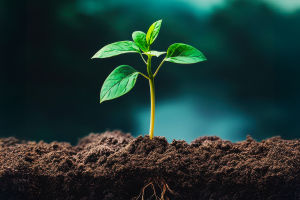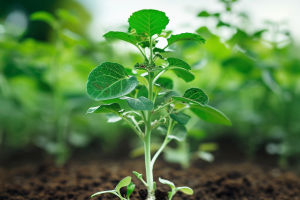Hey Lykkers! You already know that plants soak up sunlight to make food through photosynthesis. But did you know that they also “breathe” in a way? Not quite like humans, of course—but plants do use oxygen and release carbon dioxide too.
This lesser-known process is called respiration, and it's how plants tap into their stored energy to grow, repair, and thrive—especially when sunlight isn't available.
In this guide, we'll walk you through how plant respiration works, why it's just as important as photosynthesis, and how this quiet process keeps plants active day and night. Whether you're nurturing a windowsill sprout or admiring trees in the park, you'll appreciate just how hardworking plants really are.
Part 1: What Is Plant Respiration?
Before we dive into the details, let's ease into the basics. You'll soon see how plants, like all living things, need energy—and how they cleverly access it when needed.
How It All Begins: Stored Sugars from Photosynthesis
So picture this: during the day, plants busily turn sunlight into sugars using photosynthesis. But they don't use all that energy right away. Some of it is stored, tucked into cells like nature's version of a lunchbox.
Here's where respiration steps in. When the sun sets or the plant needs energy—maybe to grow new roots or repair a damaged stem—it calls on this sugar supply. The plant combines sugar with oxygen, and in return, it gets energy. You can imagine the sugar like a battery, and respiration is what “plugs it in” to release usable power.
Breathing In and Out: The Gas Exchange
Yes, plants take in oxygen! You might be surprised, but they actually absorb it through tiny pores on their leaves, called stomata, and also through their roots. Once inside, this oxygen helps break down the stored sugar molecules. The result? Energy to fuel the plant and a bit of carbon dioxide and water as leftovers.
It's a quiet, constant cycle—day and night—helping plants grow leaves, stretch their stems, and even produce flowers and fruits. Even seeds waiting underground rely on respiration to gather the energy they need to sprout.
Part 2: Why Plant Respiration Matters
Now that you know what's going on behind the scenes, let's explore why this process is so crucial to plants—and how it even connects to the air we breathe and the food we eat.
Fueling Growth, One Cell at a Time
Think of every tiny plant cell as its own busy workshop. Without energy, nothing inside it would move, build, or change. Respiration is what powers these workshops—it helps cells divide, transport nutrients, and stay alive.
As you water a houseplant or watch a vine climb up a fence, you're seeing respiration at work. It's what lets the plant pull energy from food it made days ago. Without it, there would be no stretching toward sunlight, no blooming, and no fruiting. It's the invisible engine that keeps everything running smoothly.
Balancing the Ecosystem
Here's something fun to think about: plant respiration also plays a role in Earth's gas balance. Even though plants absorb carbon dioxide during photosynthesis, they also release some of it back during respiration. This exchange keeps our atmosphere in check. It's nature's way of creating harmony.
And while respiration might not seem as flashy as photosynthesis, it's just as important. You wouldn't expect a car to keep running on fuel it couldn't burn, right? Plants are the same—they need to unlock their sugar stores to make everything else possible.
So, Lykkers, next time you spot a plant at night, remember—it’s not just sitting still. It’s breathing, in its own gentle way, using oxygen and sugars to stay alive and well. Plant respiration might not get the spotlight like photosynthesis, but it’s absolutely essential. It fuels growth, balances our air, and keeps those green wonders humming behind the scenes. Pretty impressive for something so quiet, don’t you think?


